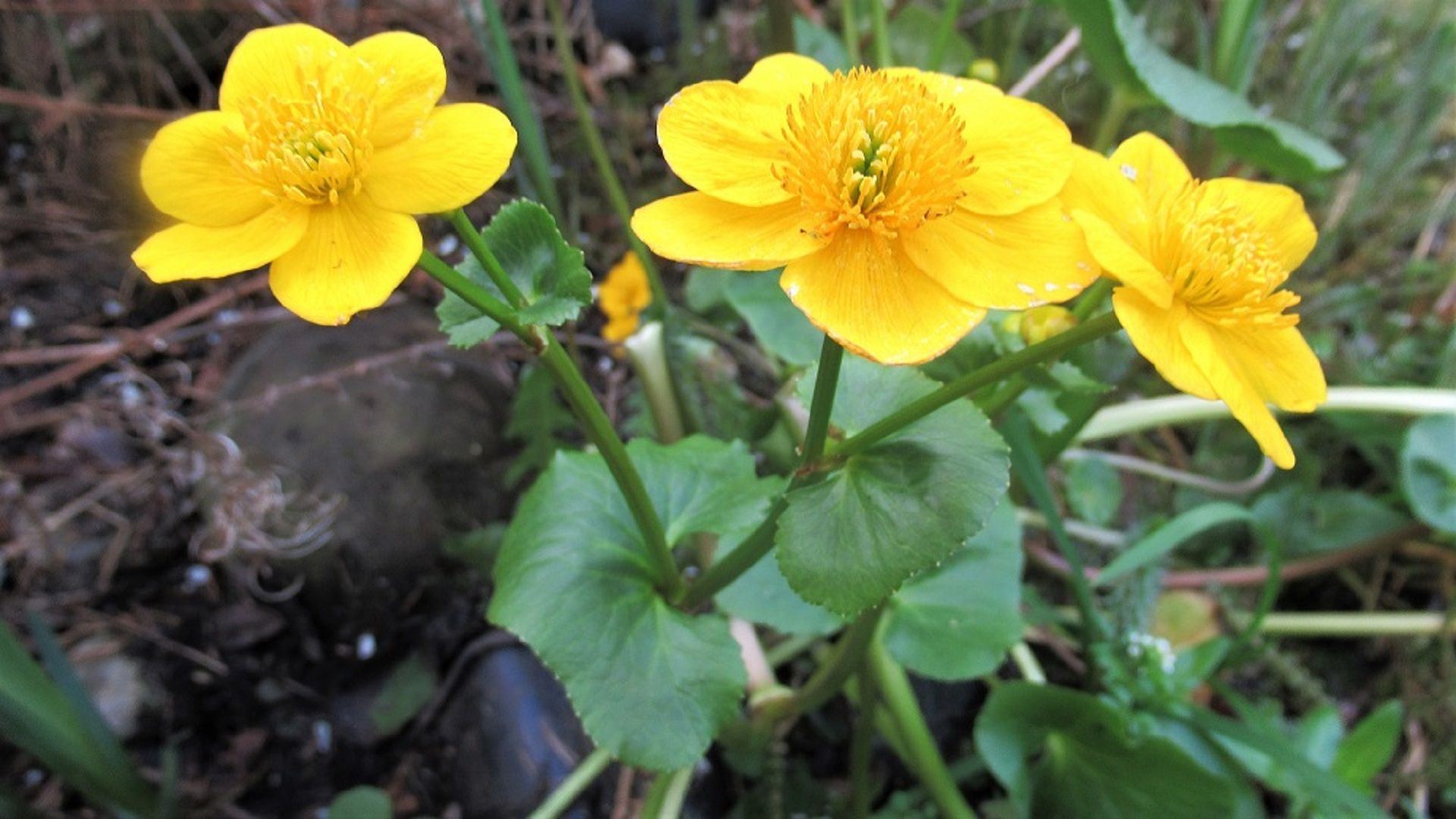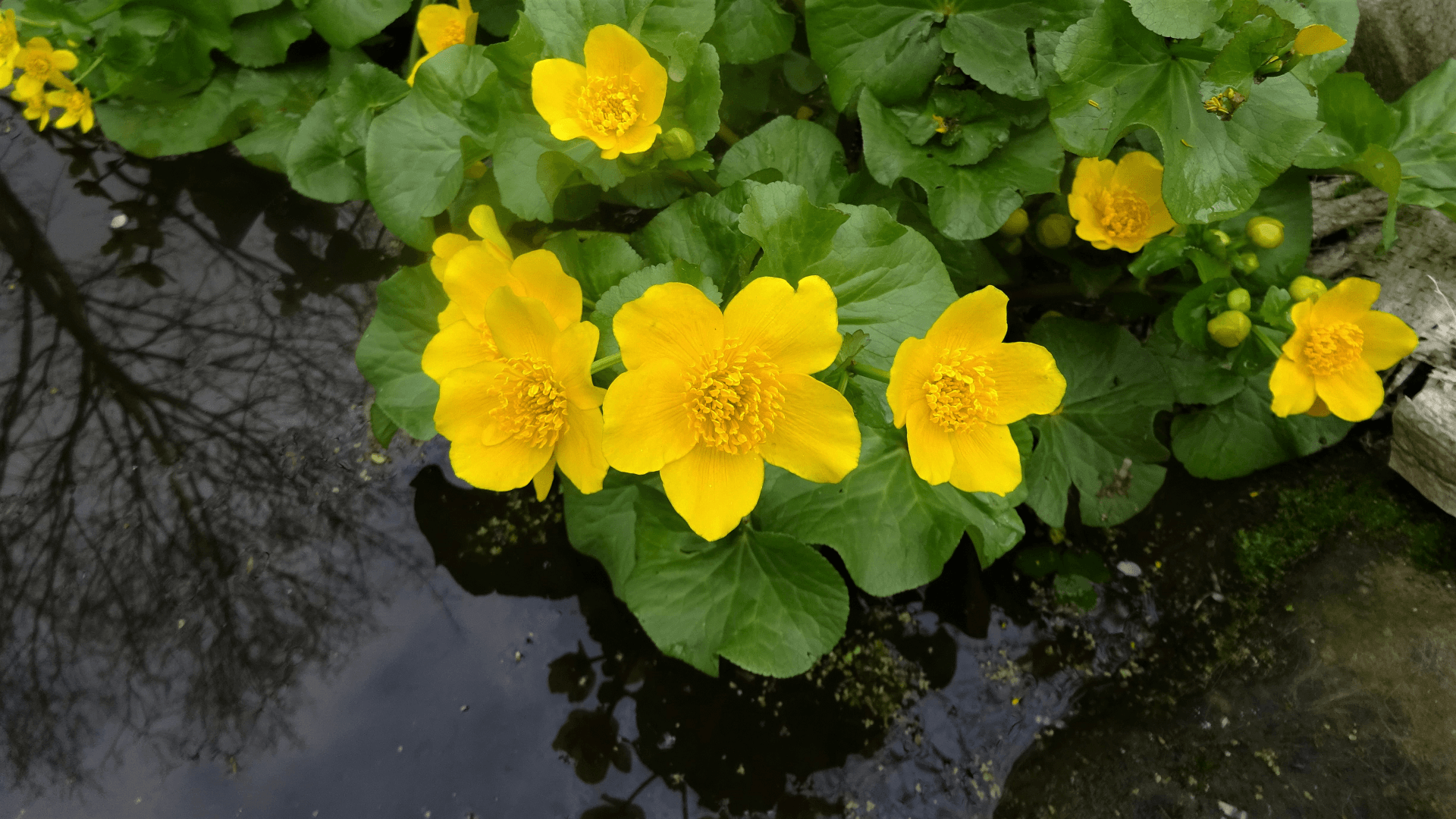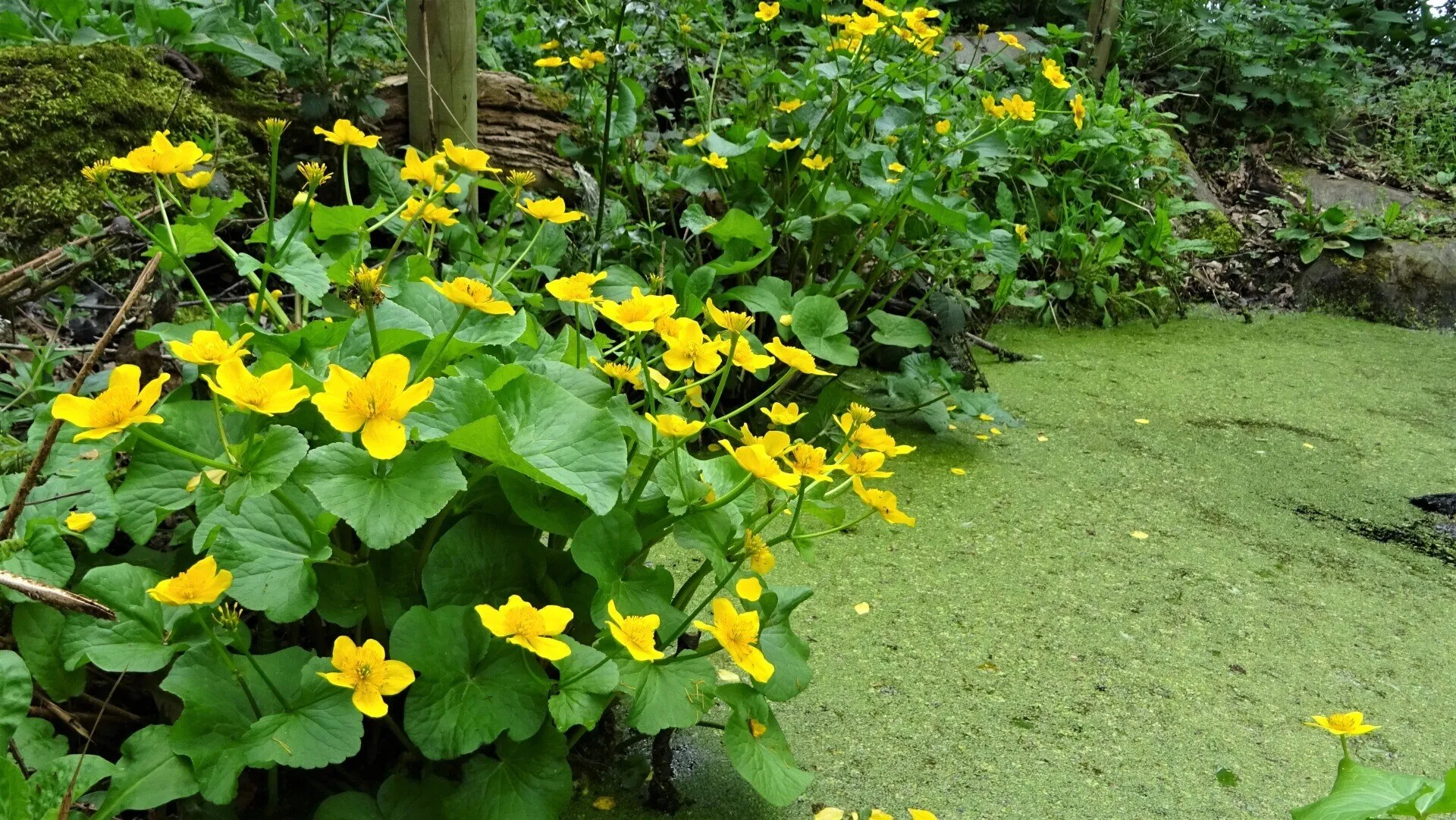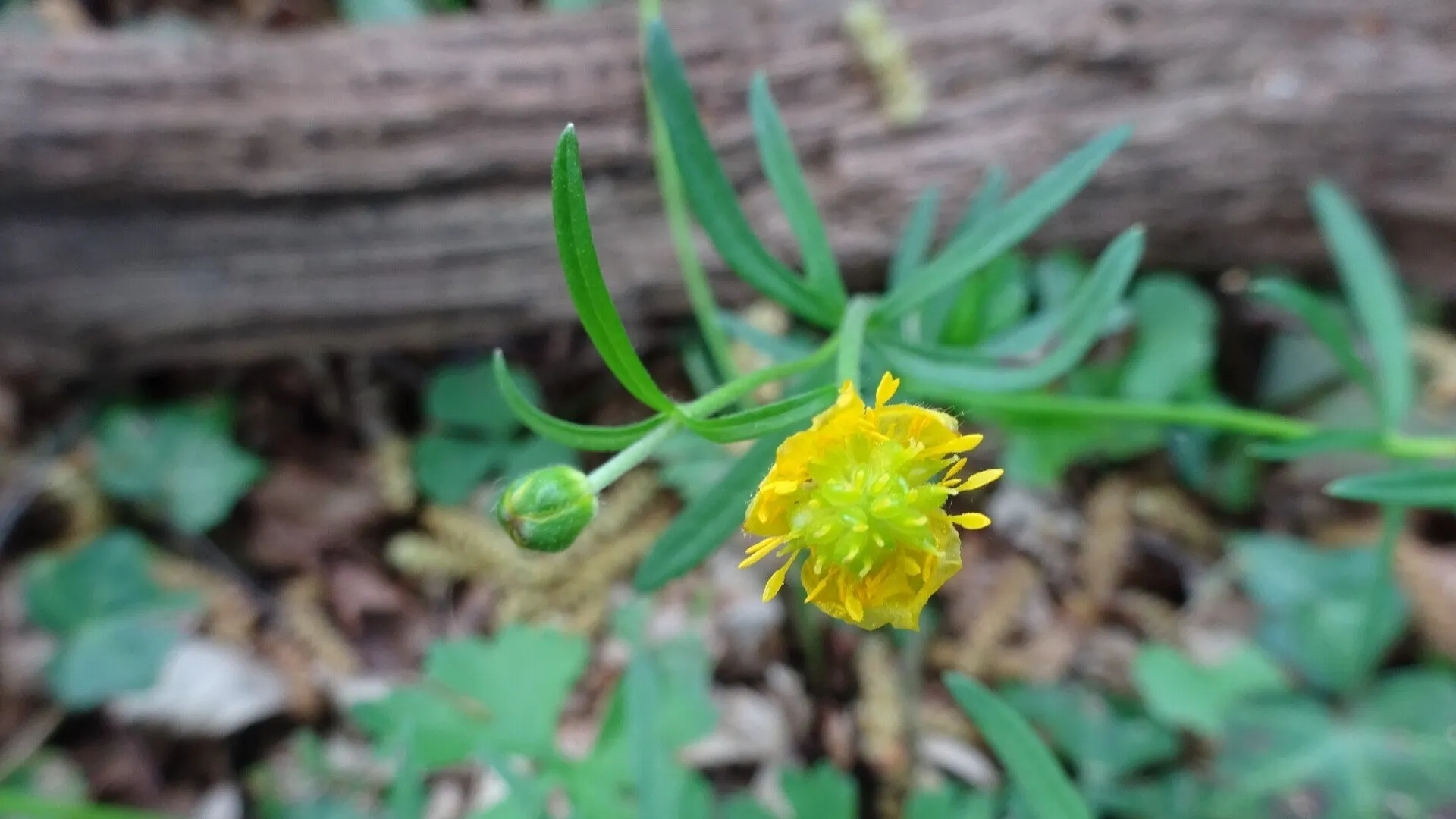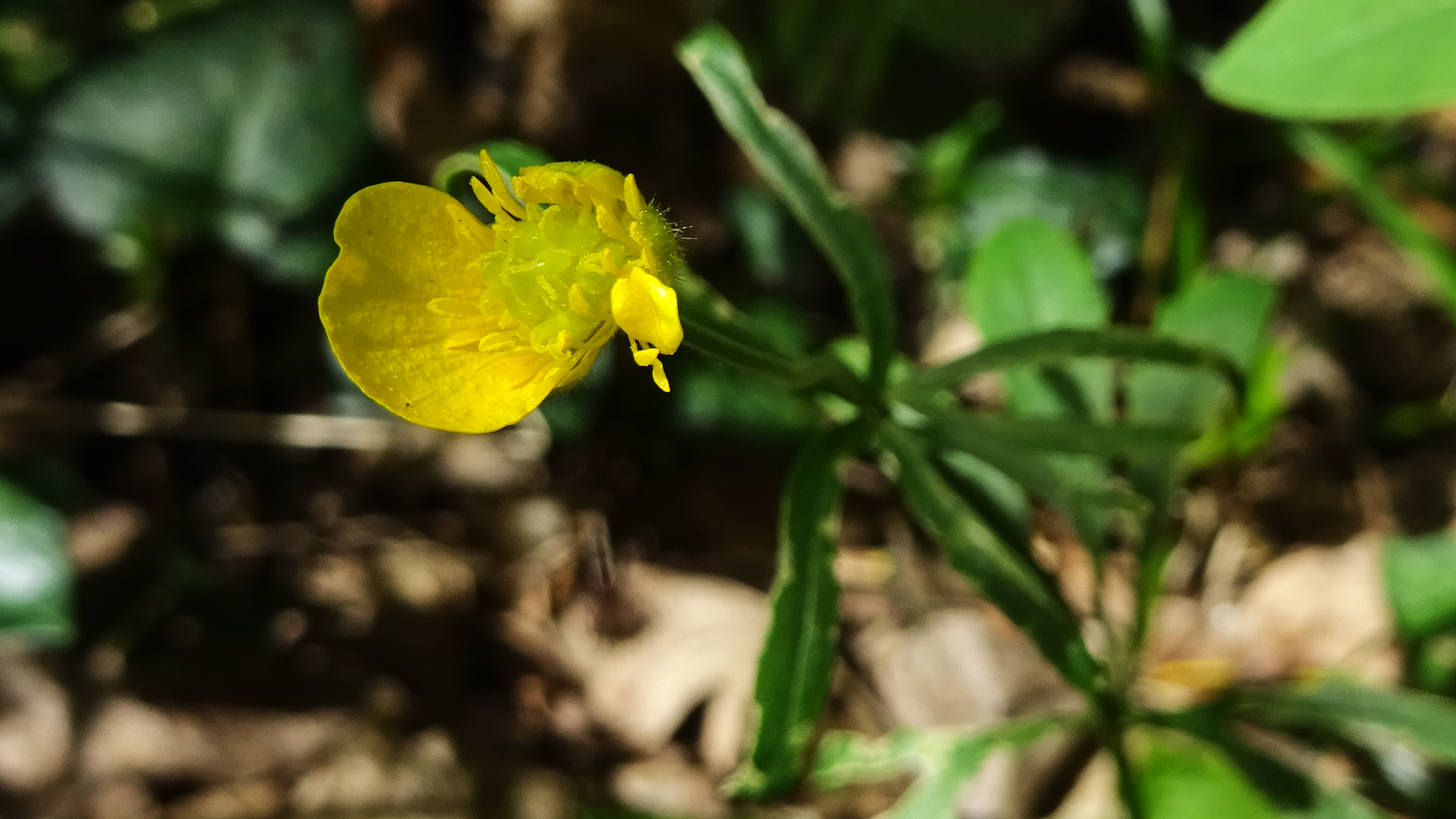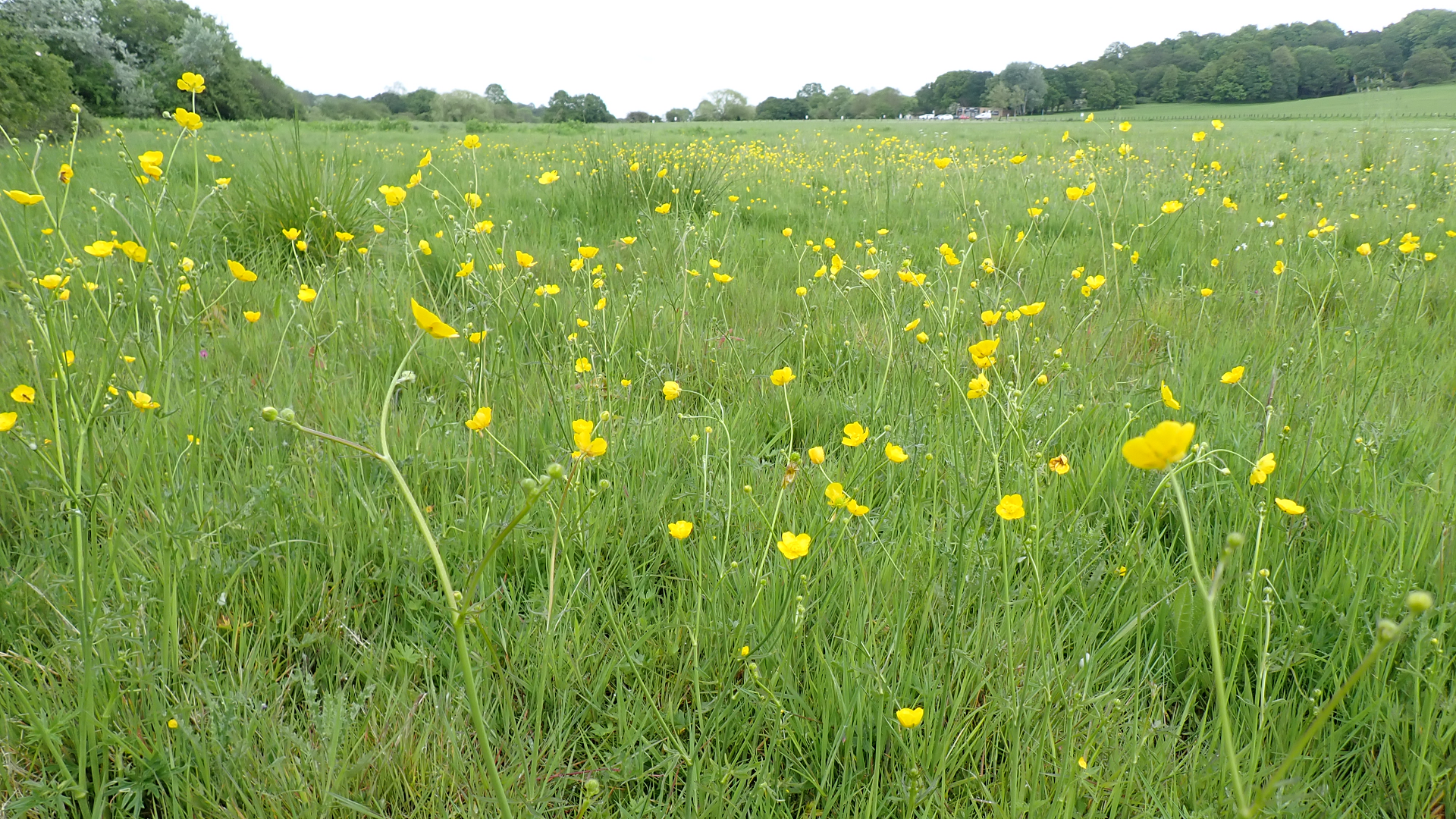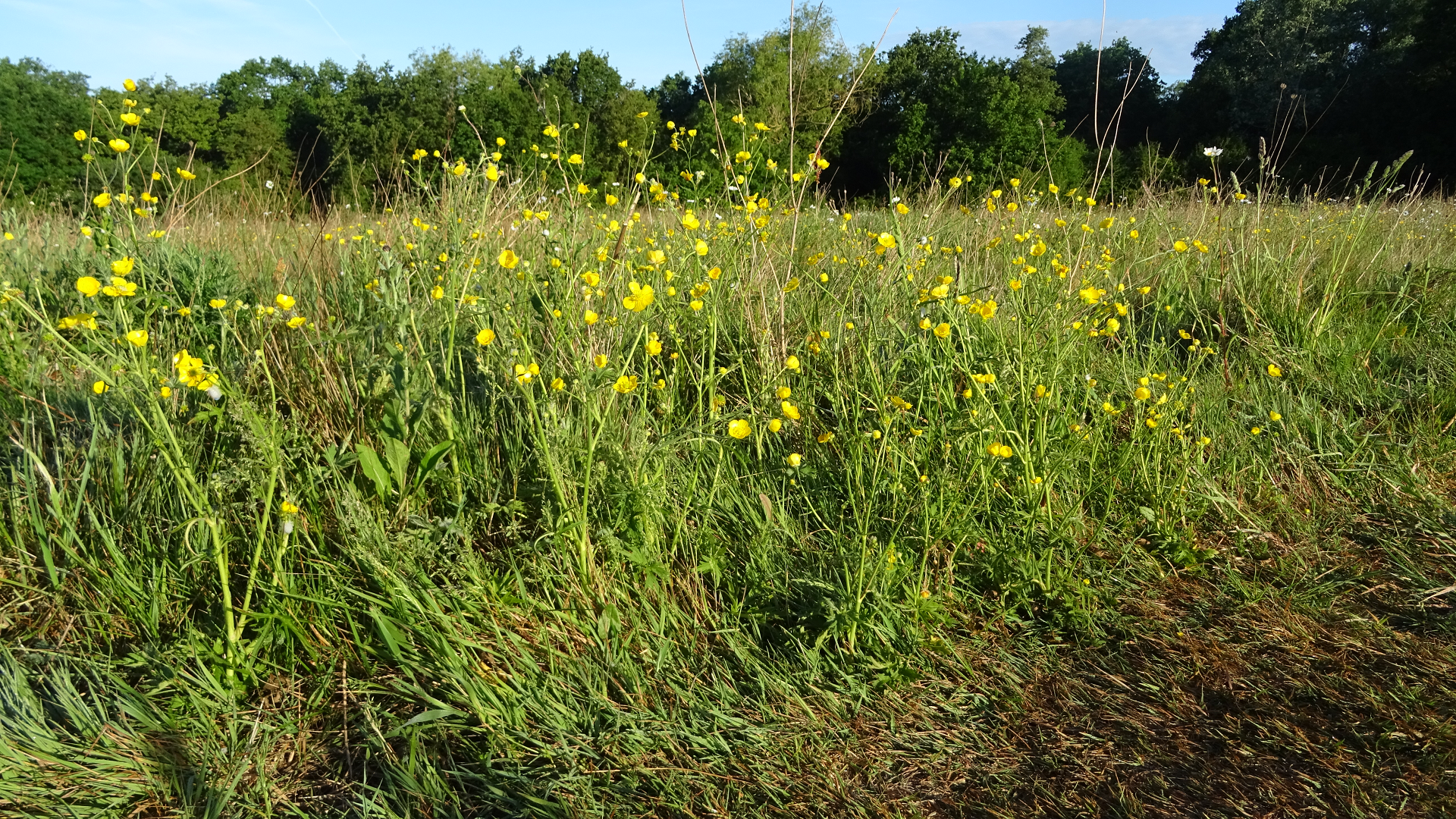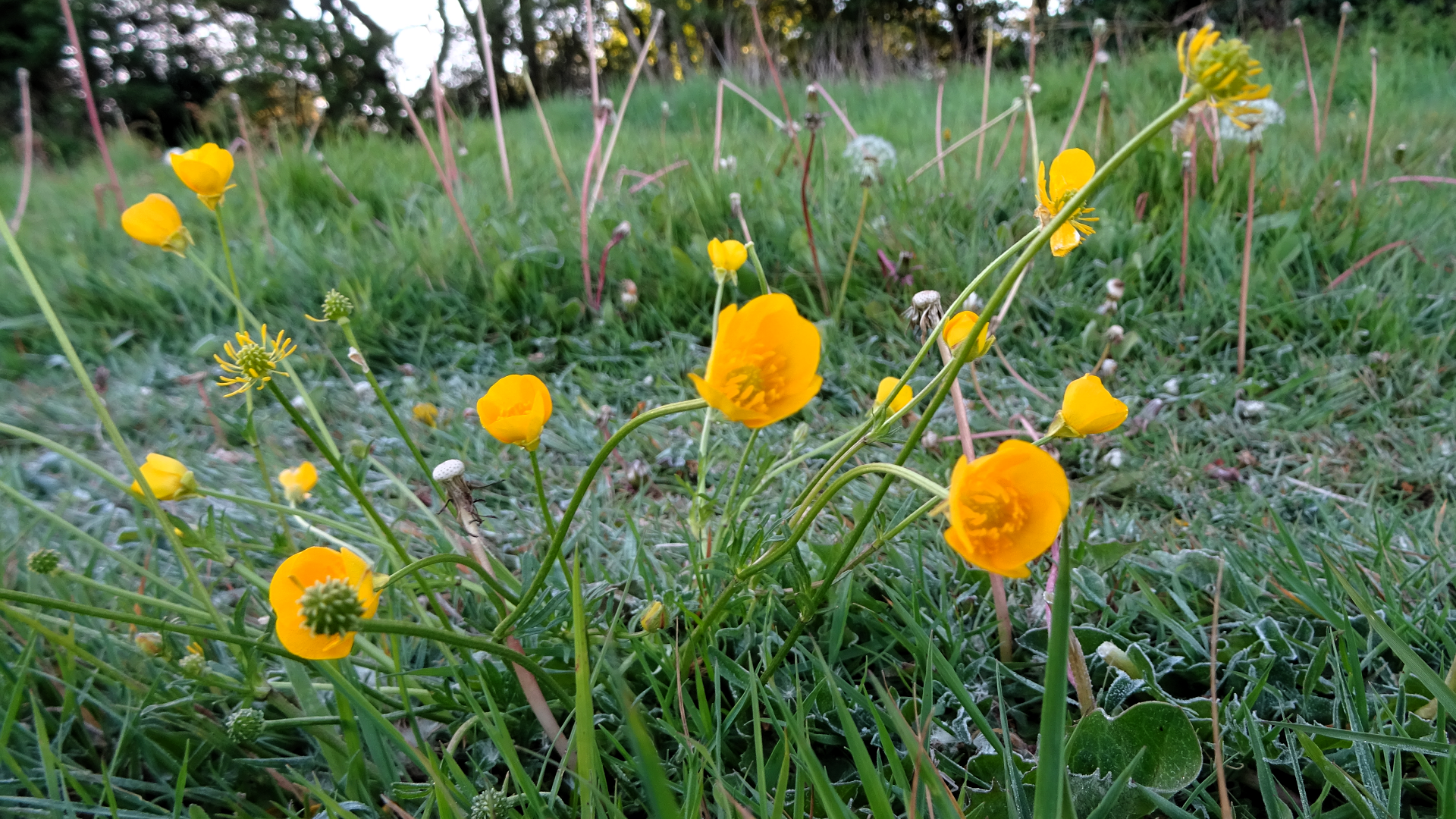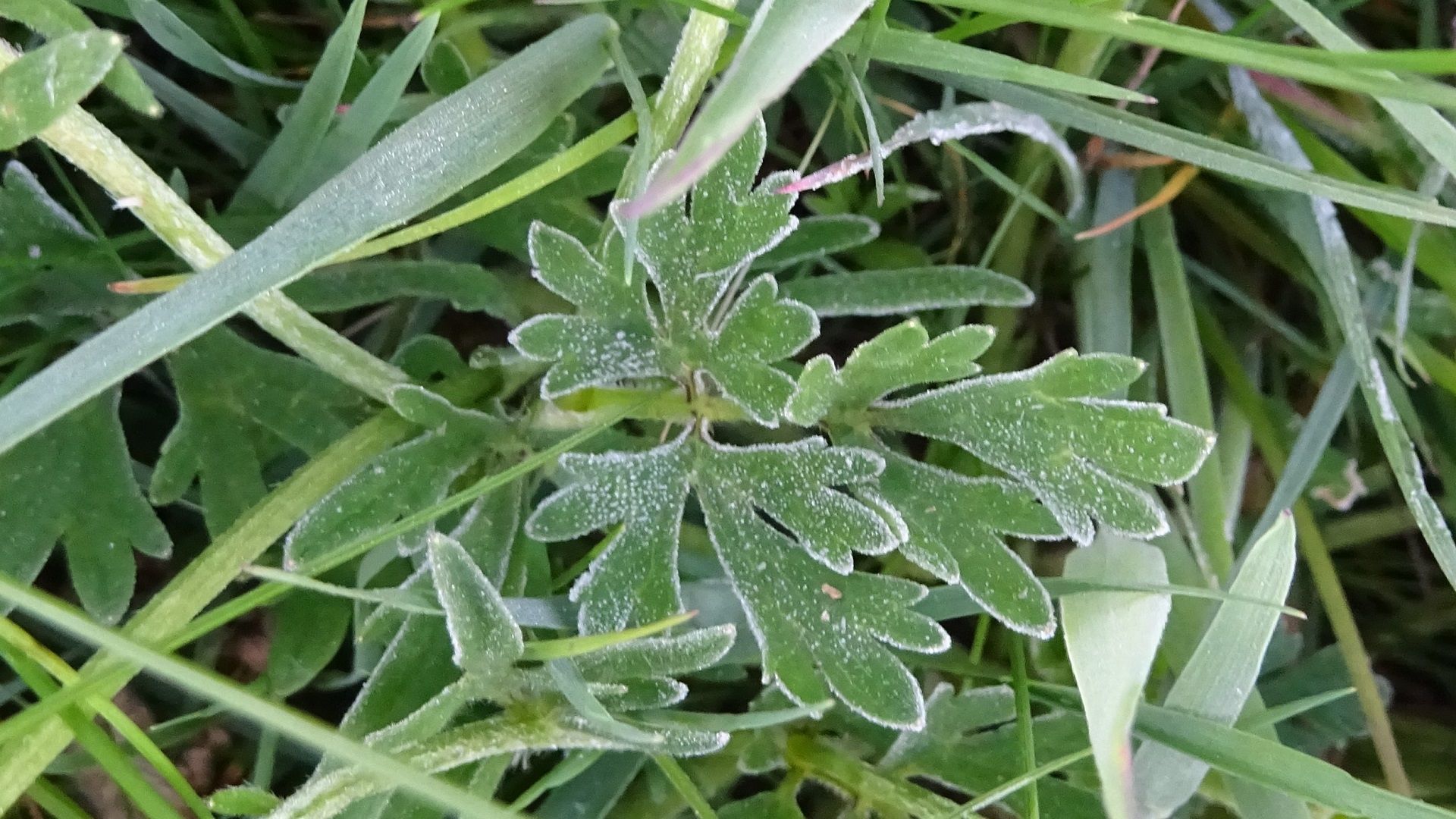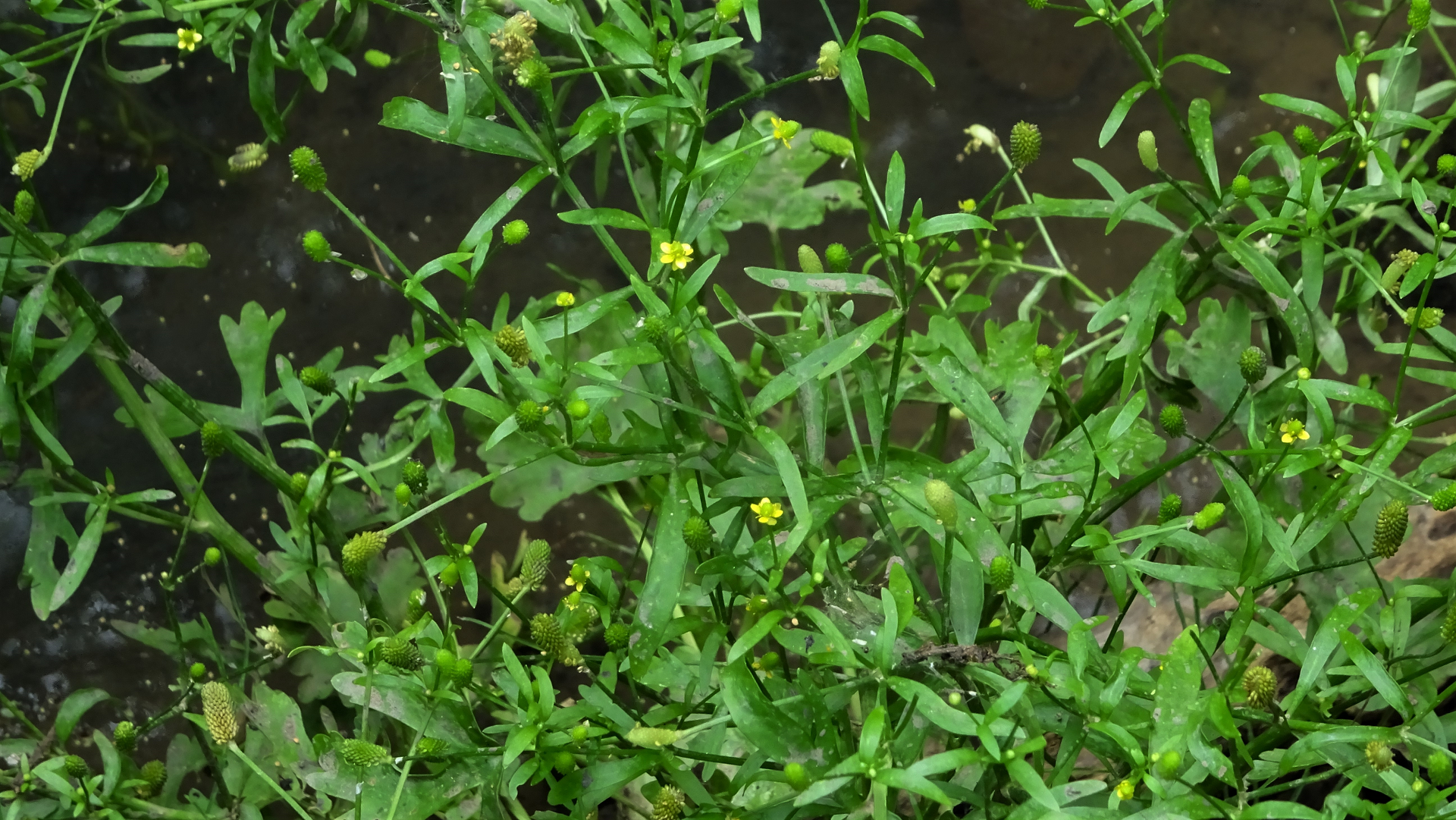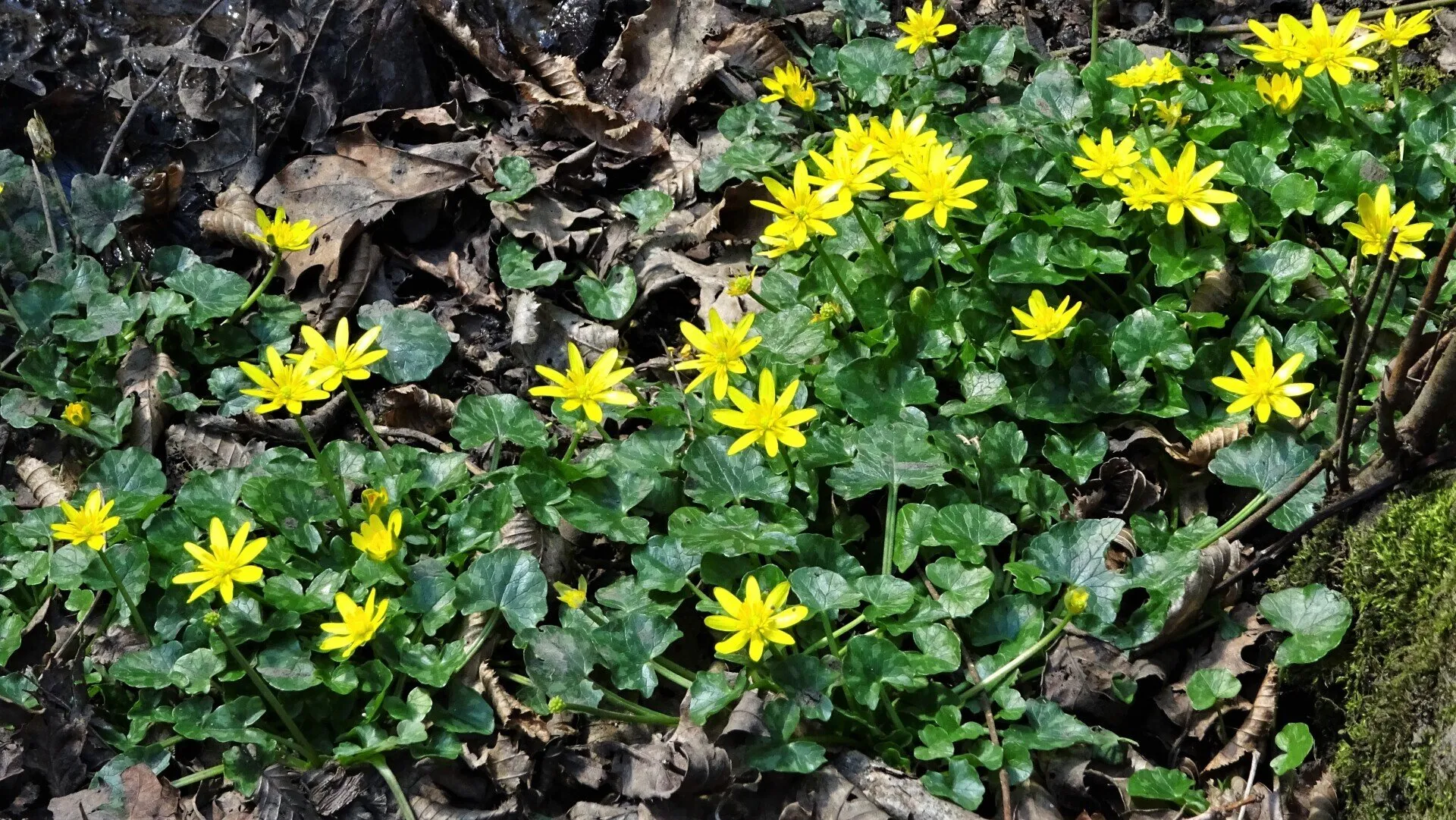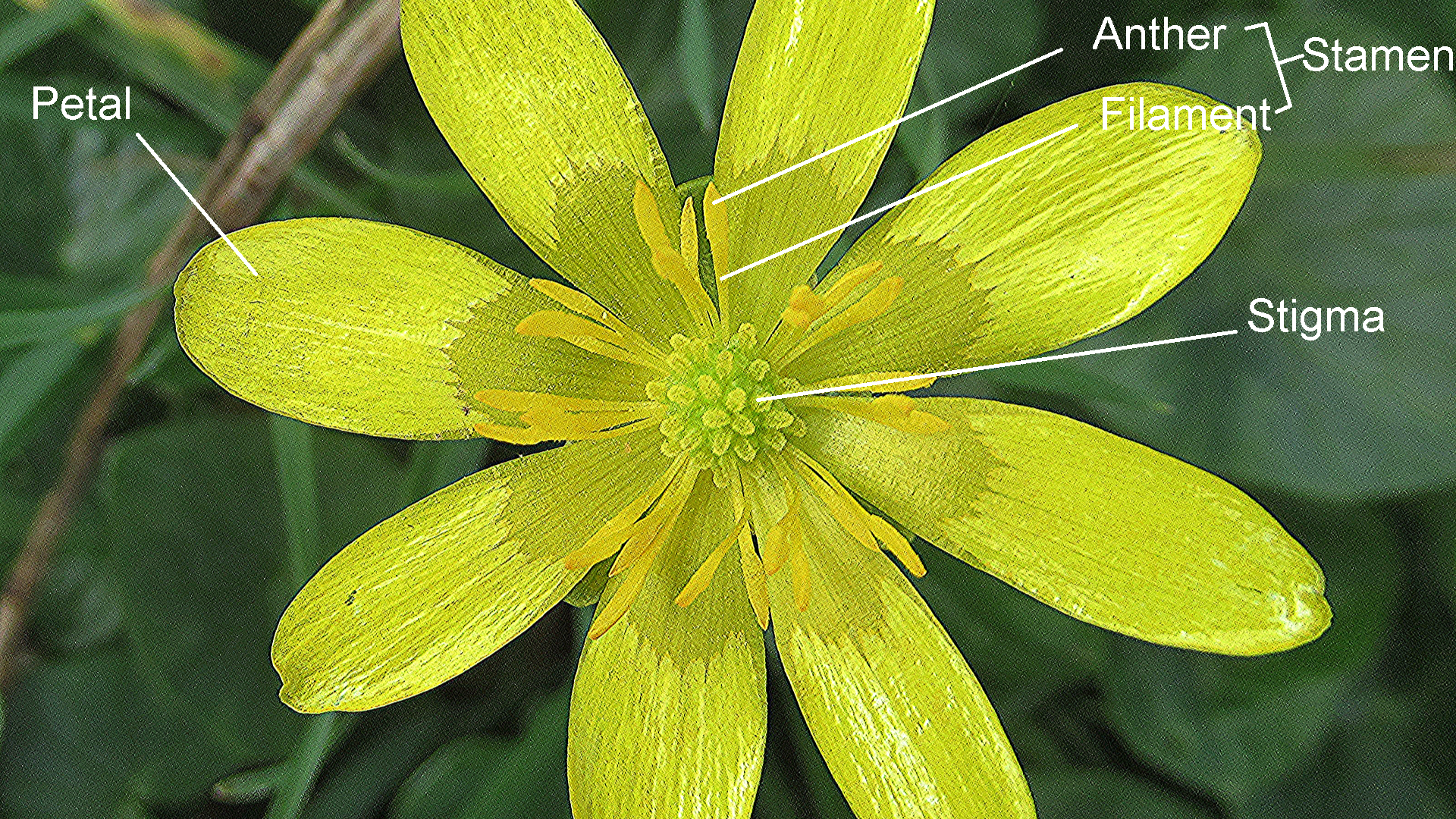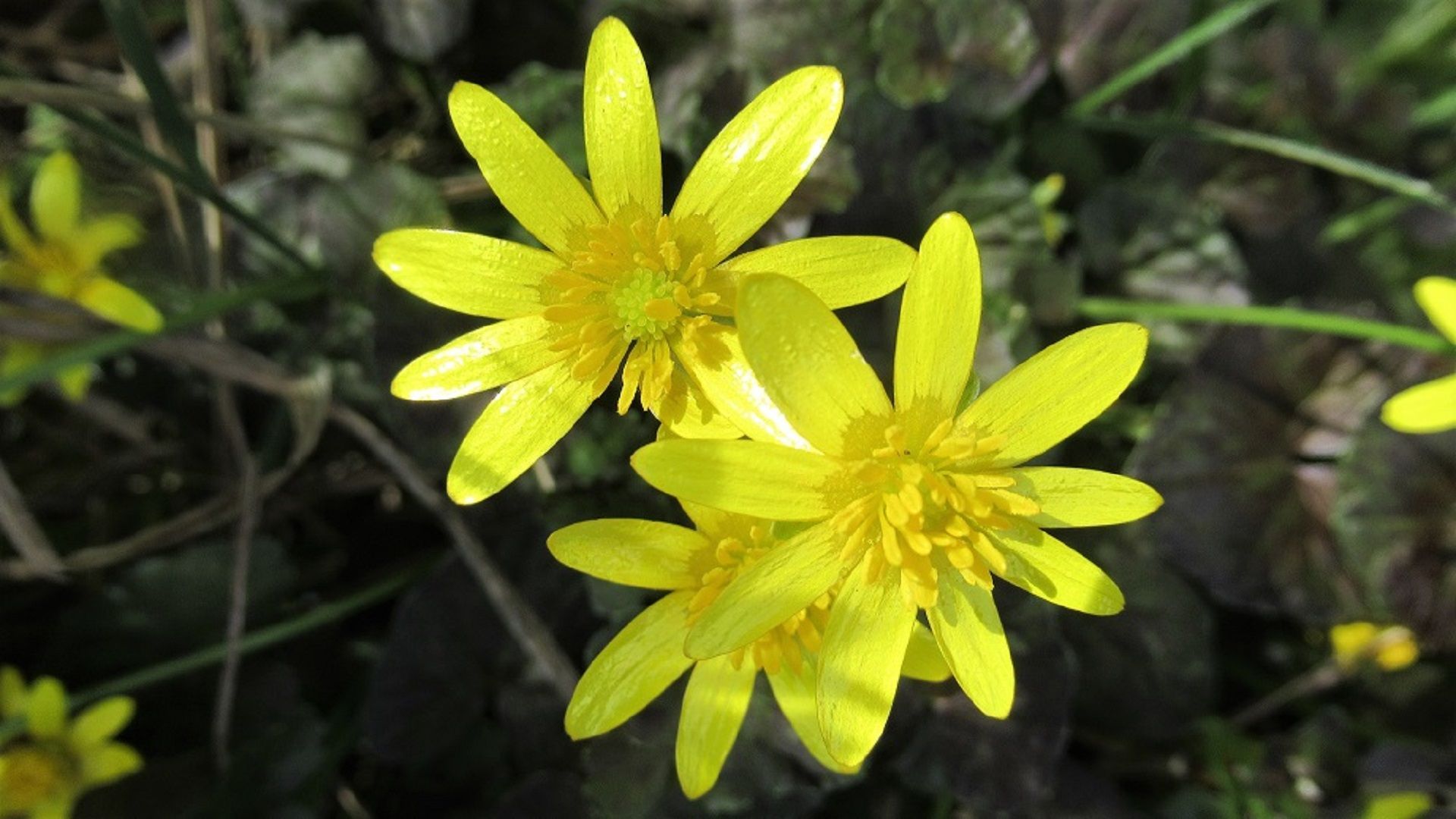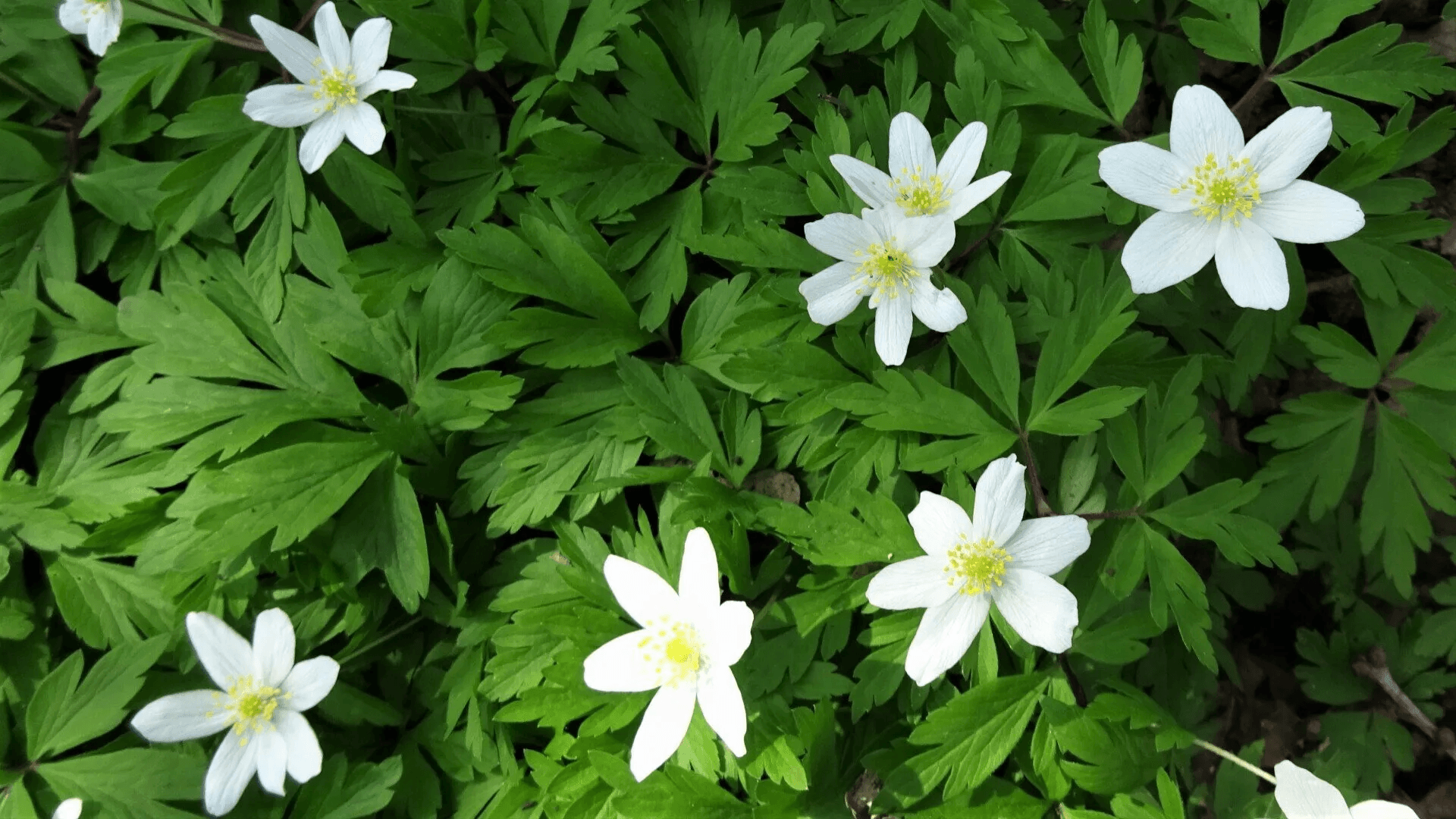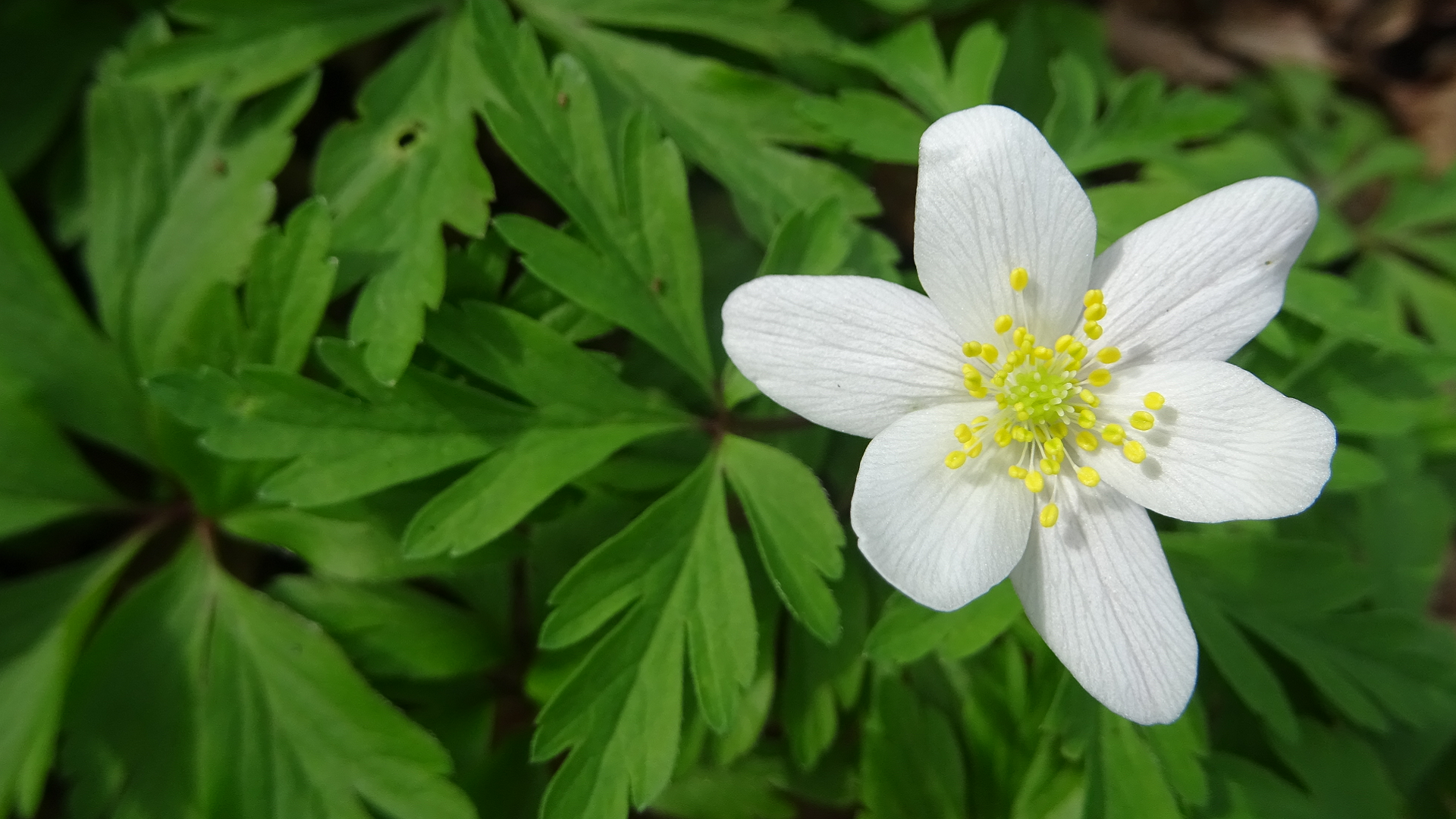WILDFLOWERS
BUTTERCUP FAMILY
Marsh Marigold
Caltha palustris has a preference for wet locations and is often found around ponds. A low, thick-stemmed perennial with shiny dark-green kidney-shaped leaves. The flowers do not have petals, instead there are five yellow sepals. Appearing from March to July, the plant is sometimes called 'King Cup' because the large flowers were thought to resemble goblets. The plants provide an early source of nectar for insects and the large rounded leaves offer a place for frogs to shelter.
Goldilocks Buttercup Ranunculus auricomus has scruffy-looking flowers with petals that are often imperfect or missing. The upper stem leaves of this slightly hairy plant are deeply lobed with 3-5 narrow segments. Goldilocks Buttercup often appears during spring along the side of the path that leads from Roe's Well towards Sheepwater in Hainault Forest.
Meadow Buttercup Ranunculus acrisis is common tall plant in damp meadows from spring until autumn. It grows up to one metre high and has five-petalled shiny yellow flowers measuring about 2cm across. The rounded leaves are divided into 3-7 lobes.
Bulbous Buttercup Ranunculus bulbosus than the Meadow Buttercup. All its leaf-lobes are stalked and the sepals are turned back. This plant has a preference for drier habitats.
Celery-leaved Buttercup Ranunculus sceleratus has a preference for damp locations and is sometimes found along ditches in Hainault Forest from May until September. Its yellow flowers have relatively small petals that appear in branched clusters. The leaves are divided into three lobes.
Lesser Celandine
Ficaria sp. is an actinomorphic flower characterised by radial symmetry (i.e. similar parts facing each other around an axis). This member of the Buttercup family is a low-growing plant with glossy green, heart-shaped leaves and bright yellow flowers about 30mm across. It is one of the first spring flowers to appear providing a rich source of nectar for insects that emerge early. Lesser Celandine uses lined patterns and ultraviolet light to guide pollinators towards the middle of the flowerhead. Flowerheads can be thought of as miniature landing pads for flying insects. Flowers produce a sugary liquid called nectar which many insects consume. Nectar is made in glands known as nectaries usually located at the base of the stamens. A visiting insect brushing against the anthers will have pollen deposited on its body. As the insect travels from plant to plant it spreads the pollen and pollination occurs. Pollination is the process of transferring pollen grains from the male anther of a flower to a female stigma. Once a plant is pollinated it makes seeds that will produce the next generation. Pollination by insects is called Entomophily.
Wood Anemone
Anemone nemorosa is a short perennial with unbranched stems. The lobed leaves grow in whorls and the flowers grow singly. The flowers have 5-9 white sepals which are tinged pink on the underside. There are no petals.
© hainaultforest.net. All rights reserved.


